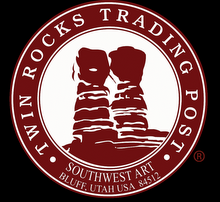Fall is a reflective time for me. During this portion of the year, I often find myself contemplating the past; remembering people, places or things that have moved through the rough and unsettled portions of my life. Looking back, I believe I am now more capable of recognizing the facts without getting caught up in the emotions that so often disrupted my logical decision making processes. Like the Star Trek character Spock, because of my human nature, I have absolutely no chance of completely conquering my emotional failings. I have, however, taken the half human, half Vulcan's lead in forever working toward that lofty goal. I am certain that when I have exercised logical action and considered reaction, the road of life I have so casually traveled has proven less rocky.
People often ask what I do with the time I spend driving to and from work each day. I have generally used this spare hour to study creative writing techniques, theology, personal improvement, diverse cultures, science; anything and everything to stimulate my mind and improve my understanding. Some say it has been ineffective. I disagree. During the drives, I have enjoyed good music, cranked up, so I can feel it reverberate through my bones. In my opinion, music is more emotionally enjoyable when it is felt as well as heard. My family has chastised me on a regular basis after they turn the key, only to be blasted by speakers tuned to full throttle. Of course, after so many years of commuting to loud music, I cannot hear their complaints.
In the autumn of the year I refocus. The audio books are shelved and my DVDs go back into the case.' Tis the season for meditation. I learned this habit from the Dalai Lama, and a number of other well informed individuals. I have found that my thought processes are better organized when I take time to reflect. Imagine that! This time of the year is more conducive to contemplation and consideration. It must be the incredible light and vibrant color the season has to offer. It could also be that it is darker for longer periods, and my pace slows both physically and emotionally. I always think better in the dark; fewer visual distractions I guess.
Getting out onto the land itself also aids in improving my mental state. The Navajo people believe Mother Earth is a cognitive being who continually provides for her human inhabitants, and asks nothing in return. Her considered responsibility is love and compassion for all living beings. There is no negativity in Mother Earth, she actually absorbs all dissension, opposition and disagreement; turns it around and reflects only positive energy. Now there is a high ideal to strive for.
I once read an article about a scientist studying the plant and animal life of Madagascar. He commented on how exciting it was to discover so many new species on almost a daily basis. That relatively untouched land was constantly giving up new information. The naturalist vowed to spend his life on the island, because there was no other place on earth so pristine. It makes me wonder how much we have lost due to our ignorance of the natural world, and the human desire to alter it. Mother Nature has much to offer, we need only take the time to hear her voice, having the patience to learn her lessons.
It seems there is so much to discover, and it is all too easy to become apathetic. The lessons the earth, the world and her people have to offer can be truly inspiring. Maybe it takes maturity and seasoning to begin to understand the important questions in life. Like my butcher always says, "Everything is better with age, and a little seasoning." Maybe that is why I have established such a fondness for fall.
 |










 At the home above the trading post, Grange often asks me to make him peanut butter and jelly sandwiches. He, like his dad, is capable of living exclusively on peanut butter and jelly. His mother prefers the smooth variety. I, however, want texture, and opt for extra crunchy. When it comes to making sandwiches for Grange, I always ask him, "Hey buddy, do you want the super extra crunchy yummy delicious peanut butter, or the smooth?" You can guess what he chooses. I am easing him into the world of texture.
At the home above the trading post, Grange often asks me to make him peanut butter and jelly sandwiches. He, like his dad, is capable of living exclusively on peanut butter and jelly. His mother prefers the smooth variety. I, however, want texture, and opt for extra crunchy. When it comes to making sandwiches for Grange, I always ask him, "Hey buddy, do you want the super extra crunchy yummy delicious peanut butter, or the smooth?" You can guess what he chooses. I am easing him into the world of texture.











